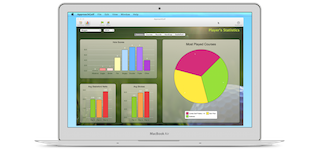
Understanding the weather, aspect of your climb and descend, and conditions all help build your mountain model. Knowing the temperatures, the night before you climb, how much cloud cover there will be and when the face comes into sunlight is all vital information. A climb on a southwest face might be safe at 6 a.m., but by 2 p.m., it will be very unsafe due to rock, ice and snow falling. As the day warms then rockfalls and avalanches will increase, same goes for snow and wind. If it’s cold overnight, then the snow will be hard and easy to walk on in the morning. Each mountain face reacts to direct sunlight and temperatures differently depending on its aspect. The alpine environment changes every day, hour, and minute. This can be a very windy and cold climb, but well worth it. After the bergschrund, climb the ice fall to the ridge that leads to the summit. The weather can be iffy, and the snow conditions might stop you from starting up, but if you get a good window then you’ll be rewarded with one of the best big ice faces in western Canada.

It’s remote and difficult to reach, often requiring multiple days. This is the safest route to the summit and is used as the descent after reaching the top. Kain Face of Mount Robson: This was the original route up the highest peak in the Canadian Rockies, first climbed in 1913. Stay left of the rock outcrops near on route to the summit. After your reach the glacier, cross below the highest part of the wall and start up. There are several climbs up the north face, but the most climbed is the Kahl Route or North Face West End at AI3. The routes on the north face are rather moderate and the approach is straight-forward, which makes this one of the most popular snow and ice route walls in the Rockies. Located in Kootenay National Park, the approach follows the popular Stanley Glacier hiking trail. North Face of Stanley Peak: This is another one of the most famous ice faces in the Rockies. To descend, follow the North Glacier route back to the road. After a short crux with fixed pitons, you climb two more pitches up an ice gully to the summit. After the ice, you climb a broken corner feature through the rock. After the approach, cross the bergschrund where convenient, and climb the face in five pitches of 45-degree ice, or sometimes snow, up to AI3. It’s a popular and enjoyable climb where good glacier-crossing skills are important. North Face of Mount Athabasca: This route can be clearly seen from the Columbia Icefield Centre on the Icefields Parkway. The descent heads down a slope that you can bum-slide until mid-summer. You need a rack of screws and a light rock rack. The upper ridge includes some rock climbing.


After the face, you can climb Haddo Peak before doubling back to summit up the east ridge of Aberdeen. The angle then relaxes until the upper “headwall” which is accessed by crossing a bergschrund.

Four Routes to Get into Alpine Ice FacesĪberdeen Glacier on Mount Aberdeen: Found near Lake Louise, this popular glacier ice climb starts with a few pitches of AI2. Seek the mentorship of a veteran alpine climber or hire a guide to increase your knowledge of challenging mountain lines. The following are some helpful reminders and tips, but nothing replaces experience and proper training.
ICEFACES REVIEW HOW TO
Understanding how to climb them safely will increase your odds of accomplishing your goals and getting home safely. Despite being formed of glacier ice, no two climbs are the same. Alpine ice faces are complex and require patience and time to understand. The climbs can lead to unforgettable experiences and can create lifelong partnerships. Moving through big terrain far above the valley below as the sun rises is one of the best ways to experience the mountains. The Canadian Rockies have some of the most classic big ice faces in North America.


 0 kommentar(er)
0 kommentar(er)
